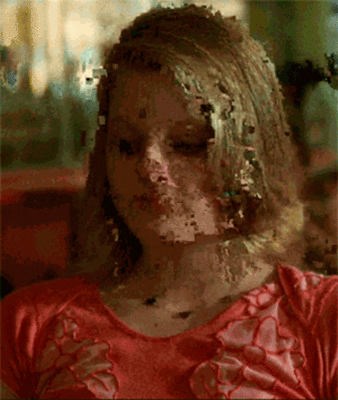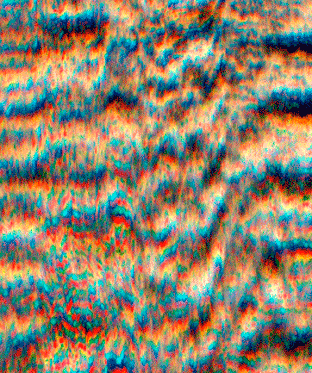Search
To search for an exact match, type the word or phrase you want in quotation marks.
A*DESK has been offering since 2002 contents about criticism and contemporary art. A*DESK has become consolidated thanks to all those who have believed in the project, all those who have followed us, debating, participating and collaborating. Many people have collaborated with A*DESK, and continue to do so. Their efforts, knowledge and belief in the project are what make it grow internationally. At A*DESK we have also generated work for over one hundred professionals in culture, from small collaborations with reviews and classes, to more prolonged and intense collaborations.
At A*DESK we believe in the need for free and universal access to culture and knowledge. We want to carry on being independent, remaining open to more ideas and opinions. If you believe in A*DESK, we need your backing to be able to continue. You can now participate in the project by supporting it. You can choose how much you want to contribute to the project.
You can decide how much you want to bring to the project.

The old format GIF format, originating in 1987, has outlived trends, uses and technological innovations up until now,but we have to remember that since the very origins of the development of the digital image, it already offered low-resolution images due to it being still a very fledgling technology. This archive format of bastardised images created a sub-standard language that has persisted and has even generated groups nostalgic for 8-bits, followers of Chiptunes, and other nerd collectives. Numerous followers of this low-tech route are to be found congregating at countless festivals[[Blip Festival (New York), Superbyte (Manchester), Nerdapalooza (Orlando), Europe in 8 bits (different European cities), LoveBytes (sheffield), etc…]].
In the same way, this pixelated aesthetic recourse of endless loops has persisted, it has also generated other low-tech sub-products like the Glitch. Exercising heterotopism (the description of places and spaces that function in a non-hegemonic way [2]) we find an interesting connection. The use of images with a loss of material is readily associated with a way of relating to technology, an ethical, aesthetic and ideological position, as David Casacuberta indicated in [[Heterotopía is a concept elaborated by Michel Foucault.]]) we find an interesting connection. The use of images with a loss of material is readily associated with a way of relating to technology, an ethical, aesthetic and ideological position, as David Casacuberta indicated in “El LowTech hispano”[[http://www.ub.edu/imarte/investigacions/estudis-teorics/david-casacuberta/el-lowtech-hispano/]]: We could say that low-tech, on the bottom line, is a mental state. Not all of the equipment we work with needs to have been drawn from the rubbish. It’s more about the way we relate aesthetically and ideologically to technology.
A direct consequence of the manipulation of digital images can lead to a system’s error: if we physically damage a computer support, or force a program to process information in a very different way than we’re supposed to, we obtain surprisingly unexpected results. For example, with a rapid consultation of Tumblr using the tag “glitch” we enter into the sub-world of GIF images en movement, chaotically ordered, castoffs of textural qualities, snatched images of actors, multiple qualities of interference, references to the past, to the aesthetics of video-games in 8 bits [[Microprocessors widely used in domestic computers and videoconsoles in the 70s and 80s.]], and examples of the very effects of pixellation
Since technology has become affordable for the vast majority, we can easily have the equipment with which to produce a high-quality audio-visual project, at the same time, the panorama of software suffers the same fate, and there is an extensive network of attendance-based and online courses available to us at minimal cost. The image and its production are the order of the day, and for this very motive, its manipulation will have no meaning if we don’t define what it is we want to say with it. We’re no longer that concerned with its use and manipulation so much as with the discourse in which we clothe the image.
Antoni Muntadas explained in 2012 (interviewed on the series Metrópolis, for TV Española): A project defines the medium to be used I never begin a project knowing the medium I’m going to use[[http://www.rtve.es/alacarta/videos/metropolis/metropolis-antoni-muntadas/1300175/ ]]. Pre-establishing the selection of the technology to be utilised in an artistic project doesn’t seem to be his method. These words of Muntadas are valid for the contextualising of the world of GIF images.
Conscious, therefore, that artistic proposals coexist in a reality of low-res images, we see that this order that marks Muntadas approach loses its original meaning; the production of the image is not innocent. Hence, it’s now irrelevant whether we bother to start a work selecting a technology or not. GIF products, like the majority of current technologies, determine the discourses of art. We could affirm that the product and the way in which we digest the images are continuously shifting and evolving. Currently, GIFs are surrogates that travel at great speed and with intensity in the sea of data reality.
GIFs are animations or actions that are always short, in constant repetition, regardless of the quality of the cut that can grant a simulation of continuous movement. The interest lies in the nondescript, in concentrating the gaze on the anecdotal. A clear example of what Groys recounts about the scarcity of time in the article The Weak Universalism[[Groys, Boris (2014). El Universalismo débil publicado en Volverse público. Las transformaciones del arte en el ágora contemporánea. La Caja negra. Buenos Aires. Pág. 107.]]:.”In this sense, our present time is not a postmodern but rather an ultramodern time, because it is the time in which the scarcity of time, the lack of time, becomes increasingly obvious. We know it because everybody is busy today—nobody has time”.

http://giphy.com/,the major portal for GIF archives, Facebook, Twitter, Tumblr, Flickr…are never-ending sources for GIF resources, large rubbish tips into which everything disappears, never managing to gain the level of public attention that one hoped to obtain[[Ibíd. Pág. 134.]]. Each one of these networks functions generally as a means to conserve the past, presenting this past as present, a present that exists through its decadent character, one constantly disappearing.
Just as Manuela Padrón Nicolau mentions in last week’s article, when Kenneth Goldsmith[[Goldsmith, Kenneth (2015). Escritura no-creativa. Gestionando el lenguaje en la era digital. La Caja negra. Buenos Aires.]] refers to concrete poetry vindicating its validity and how Internet has given it a second life, the author mentions the feedback of all its postulates through the use of the screen. This is the space in which this small and forgotten movement coexists, a graphic interface of typographical resources, a dynamic space-time environment, with clean traces, luminous backgrounds, etc., all under the umbrella of the precarious GIF. Concrete poetry is left subjected to the reduction of the exquisite qualities specific to it. The screen grants it a briefly epidermal approach, in which concrete poetry is perceived from a very reductionist perspective, one typical of our PowerPoint culture [[A resource used mostly to communicate by part of the population of the third age, which enters into contact with the virtual world of interent. Of particular relevance is is the book by Franck Frommer (2011), El pensamiento PowerPoint: Ensayo sobre un programa que nos vuelve estúpidos. Península, Barcelona, on how PowerPoint makes us stupid]].
We are witnesses therefore to a panorama in which we seem engulfed in a major contradiction. In the face of technological advances relating to image definition, our demanding eyes have become accustomed to all sorts of images, we’re now able to complete everything that poor images omit and forget while they shift. We come to enjoy them, knowing how to feel comfortable with them and value the content above the technique.

Eloi Puig is from Barcelona and works as a lecturer at the Faculty of Fine Art of the same city. Narratives and meta-narratives, language and code, translation and construction, are a few of the pairings he’s interested in talking about, in his artwork. He’s recently been planning and developing interdisciplinary projects around the revision of Concrete Art.
"A desk is a dangerous place from which to watch the world" (John Le Carré)